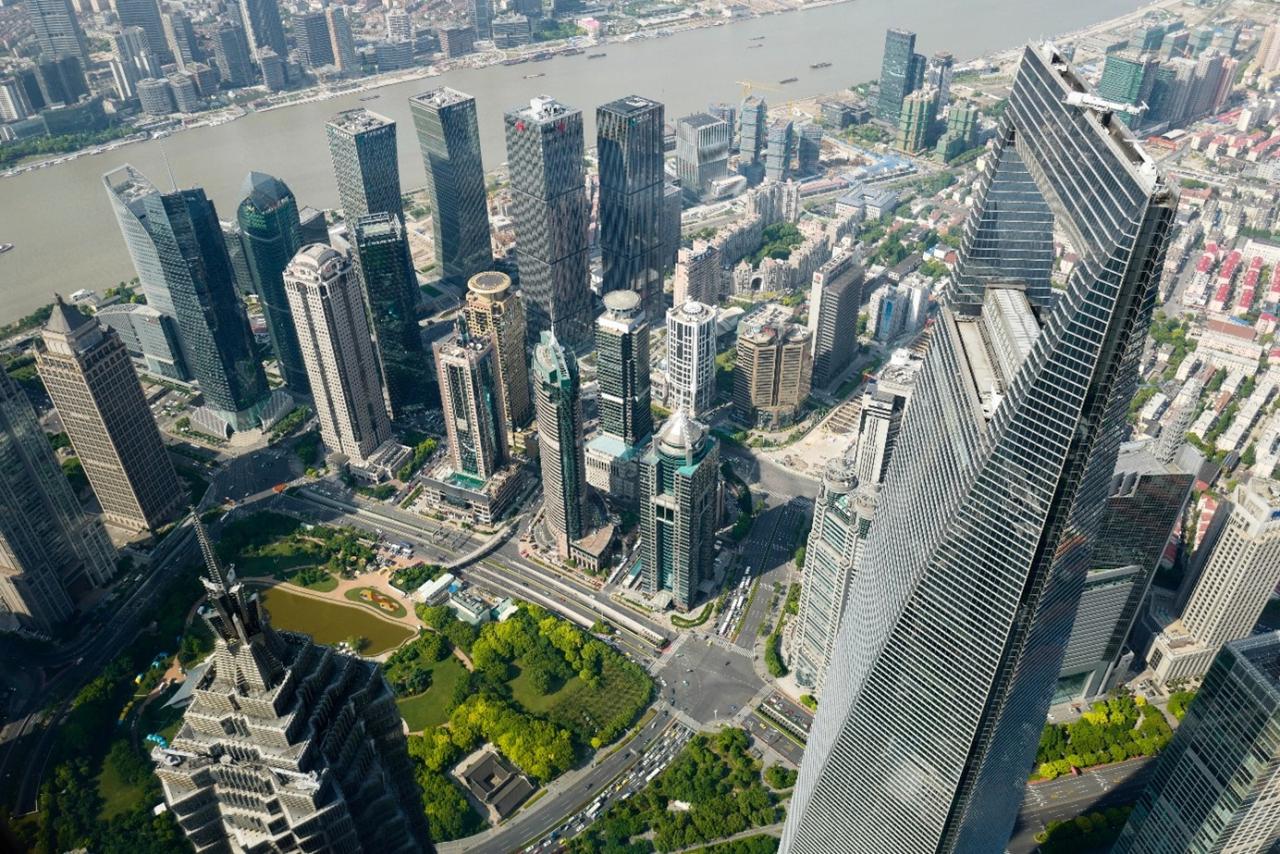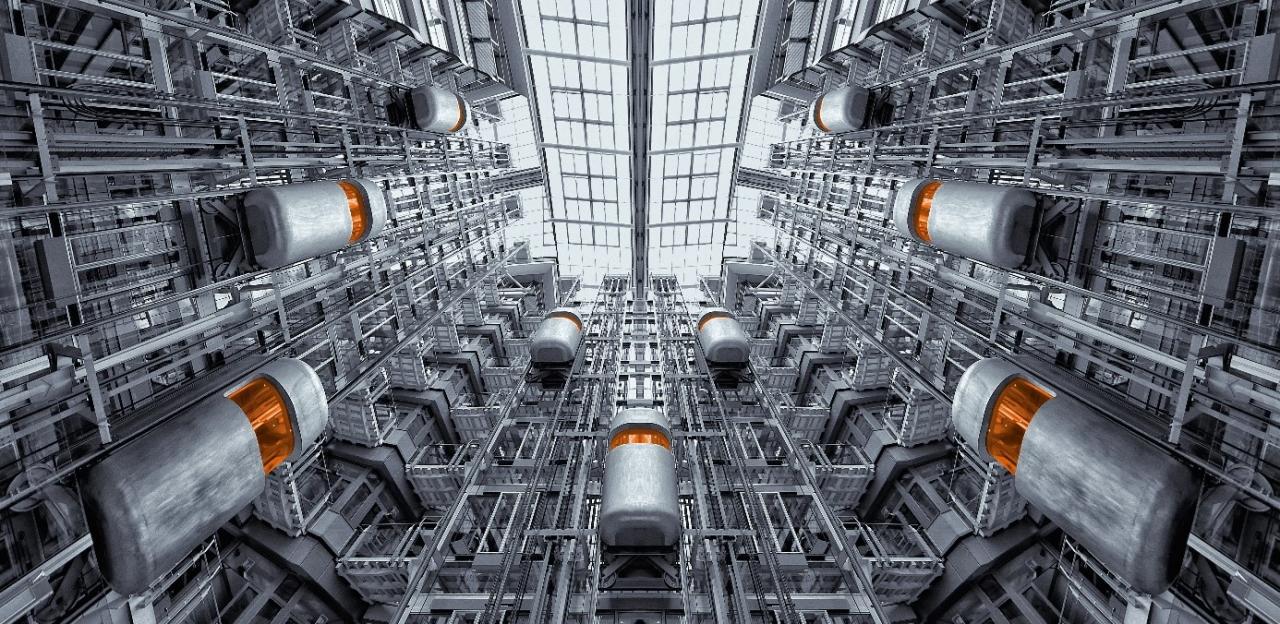Boon Edam Blog | January 2019
The population of the planet is increasing at an alarming rate. Every year, the global population rises by 89 million people, meaning more homes and facilities are needed worldwide every day.
Unfortunately, there is only so much land on which to build them. Urbanisation has been a phenomenon for thousands of years, but it has traditionally been accompanied by horizontal urbanisation - the process of where a city spreads outwards across the ground, increasing the overall surface area of the city itself.
A 2014 UN report estimates that the number of people living in urban areas will increase from 54% to 66% by 2050. With this growing pressure on housing, energy and infrastructure, governments around the world have been looking at ways to improve urbanisation for all. The solution? Vertical urbanisation.

What is Vertical Urbanisation?
Instead of building outwards, like the approach found in the more traditional horizontal urbanisation, vertical urbanisation looks to build upwards instead.
The idea is based on the fact that doing so allows you to build more within a smaller area of land. To know how much total space is available for construction, contractors use a building’s floor space index (FSI).
A building’s floor space index is represented as the ratio of a building's total floor area to the size of the piece of land upon which it is built, which is calculated by dividing the building’s gross floor area by its buildable land area. Buildings that therefore take advantage of vertical urbanisation will have a much larger FSI than those that opt for horizontal urbanisation.
Imagine a new set of homes needing to be built in a city. There is only a limited amount of space, and the planning permit states the new building must remain within a fixed area of 1000 sq.m. Typically, this would mean you are restricted to only working with an area of 1000 sq.m.
If the building has an FSI of 2, it allows you to multiply the available space, meaning you would now be able to work with 2000 sq.m area instead. Naturally, the higher the building, the larger the FSI and therefore more sq.m of area available.

The Pros of Vertical Urbanisation
Used effectively, building upwards allows you to urbanise using a smaller area of land. Urbanisation is often seen as damaging to the environment, destroying nature. While horizontal urbanisation naturally contributes to the disappearance of agricultural areas, vertical urbanisation limits the damage done by a huge margin.
New York City is a prime example of a city that takes advantage of vertical urbanisation to limit the impact on the environment. Despite being one of the most popular cities in the world, Central Park can run for 2.5 miles through the centre of the city thanks to clever use of vertical urbanisation in the buildings surrounding it.
The rise of global warming is one of the biggest environmental problems facing the planet at the moment, and continued horizontal urbanisation does little to solve the issue. Single-family homes are more difficult to insulate than multiple occupancy buildings, such as flats, and as such, energy loss is far higher. Vertical urbanisation allows for more efficient energy usage and conservation, at least when it comes to heating because the area is more localised.
There are also economic and social benefits. It is far cheaper to build and develop on something you already have a foundation for, rather than to urbanise new areas completely. Due to the fact vertical urbanisation encourages people to live within close proximity to each other, it also has the potential to improve social cohesion, while horizontal urbanisation has to the potential to promote social division in areas.
The Cons of Vertical Urbanisation
Unfortunately, vertical urbanisation does come with its share of problems too. When everything becomes closely packed together, the opportunities to maintain a healthy lifestyle become somewhat limited, when travelling becomes more vertical focused than horizontal. Walking down the road to your office may net you a few steps, but if you work on the top floor of the building, you are likely to opt to take the elevator rather than the stairs.
Elevation also brings about problems with providing utilities to high-up areas. All floors of a building are going to require pipes for water usage and removal. The higher up you are, the more power is needed to pump water to the upper floors. Hygiene can also pose an issue, particularly with waterways, when hundreds of people are operating out of a single building. This puts pressure on architects and the water companies themselves to ensure the building can cope with the additional people.
Plus, putting people close together may help promote social cohesion, but it reduces the amount of individual space available for people, which can impact one’s quality of life.
What Does Vertical Urbanisation Mean for Our Cities?
As our population continues to increase and the amount of land for development decreases, vertical urbanisation is likely to become more prominent across cities around the world.
Cities that physically do not have any land left to develop on, such as those by the sea or on the border to other countries, will likely be the first cities where vertical urbanisation will take full effect. Where land becomes scarce, people moving to cities where vertical urbanisation is prominent will find it more difficult to own a single home, as flats and high-rises will likely take precedent when new homes need to be constructed.
Cities are already areas where people live and work closely together, and vertical urbanisation will only centralise even more people in one place - with all the positives and negatives that it brings.
Innovation is always occurring in the industrial and construction industries. While our cities will undoubtedly become taller over time, how they look and operate in 50 years’ time could be unlike anything we have currently have now. Change is coming to our cities, and all of us need to be prepared.
Transit Management
Part of this innovation involves the question of how to move people freely, smartly and safely while they go about living and working in these tall environments. PORT Technology offers a revolutionary way to optimise traffic flow throughout a mid to high-rise building without losing the personalised touch and peace-of-mind of access control. Such a system incorporates touchless operation, access via mobile phone and prediction of movement to allow a seamless journey.
This technology includes advanced elevator destination control which means that only the right, authorised, person can enter a floor from a public area such as a reception or lobby. Boon Edam’s Lifeline Speedlane Swing speed gate provides the elegant solution to integrate the PORT 4 mini device. The power of these two technologies lies in the combination of speed gate security and transit intelligence. Through entrance solutions such as these, architects, developers, security manager and end-users alike can experience real innovative harmony.
To find out more about the importance and impact on early elevator allocation and the impact of a secure entry in the tall building of today and tomorrow, contact the entry experts. You can also watch product manager, Daan van Beuskom talking about integrating this innovation into security solutions.
